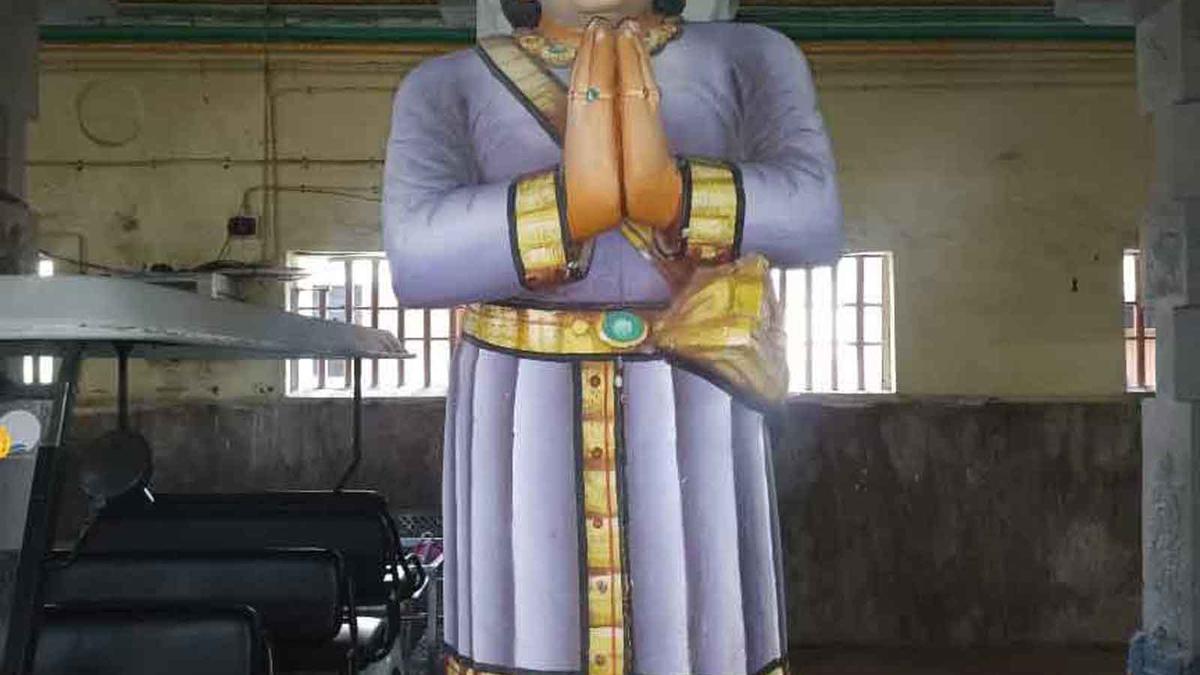
The painful spectacle of 47 wives of the Ramanathapuram king committing sati
The Hindu
The painful spectacle of 47 wives of the Ramanathapuram king committing sati
Ramanathapuram, known as Maravar Seemai that attained great heights during the reign of Kizhavan Sethupathy, also witnessed one of the “painful spectacles” of sati, a system that allowed the wives of a king to die in his funeral pyre. “No fewer than forty-seven of his wives burnt themselves, I should perhaps more correctly say were burnt upon his funeral pyre,” according to J.H. Nelson, author of The Madura Country: A Manual. It happened in 1710. The incident is also confirmed by S.M. Kamal, author of Ramanathapuram Maavattam: Varalattru Kurippugal (Ramanathapuram District: Historical Records). Under the tile, Theekulitha Karigaikal, he writes that all the 47 wives of the king committed sati some distance away from the Ramanathapuram palace.
Dispatches of Father Martin
In recording the incident, Nelson depended on the dispatches of Father Martin, a Jesuit, who resided 10 years in the neighbouring Moravar. “A large and deep ditch was dug at some little distance from the town of Ramanathapuram, and nearly filled up with a vast quantity of wood; and at the proper moment, the body of the dead Prince, richly clothed and adorned, was laid upon the top of the pile, which was then set fire to at the bottom in many places, whilst diverse ceremonies were performed by the attendant Brahmans. When the lower part of the pile had begun to burn briskly, the troop of victims drew near to what was to be their sacrificial altar, all covered from head to foot with jewels and crowned with garlands of flowers, and began to move round the pit in procession,” he writes.
Shortly afterwards, the chief widow held aloft the sword of her husband and addressed his successor. “See here,” she said, “the weapon with which our King was wont to triumph over his enemies: be careful never to use it for any other purpose, and above all never to stain it with the blood of your subjects. Govern them as he governed them, like a father; and like him you will live happily for many years. As for me, since he is no more there is nothing left that should keep me in this world, and I have but to follow him whither he is gone.” With these words, she placed the sword in the hands of the new king, who received it without betraying any sign of emotion, and then with a wild cry threw herself boldly on the pile, calling loudly upon the names of her Gods.
The event witnessed poignant moments when his second wife, the sister of the Tondaiman Raja of Pudukkottai, prepared herself for sati. Tondaiman Raja was present. He had to take from his sister the jewels with which she was adorned. “Whilst doing so, he could not restrain his tears. Throwing himself upon her bosom, he embraced her with the tenderest affection: but the unhappy woman appeared to be all unmoved; and after looking for a few moments now at the pile, now at the attendants, and crying out now and again O! Siva, Siva, threw herself on the burning mass with the same boldness as the first,” Nelson writes of the event.
Though all the widows followed suit, “one only more timid than her fellows ran and threw herself on the neck of a Christian soldier who was standing by and implored him to save her”.
“But her entreaties were ineffectual. The man was violating the explicit orders of his priests in being present at this ceremony, and being alarmed at public attention being attracted to him shook off the unfortunate woman with so great violence that she lost her balance and fell headlong into the pit. At the same moment, he hastily withdrew, his whole frame shivering with a presentiment of coming evil, and barely reached his home before he was attacked by a raging fever which a few hours afterwards ended his life,” writes Nelson.













